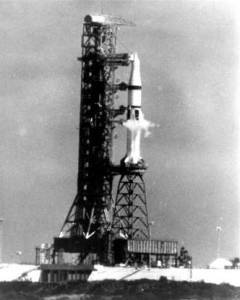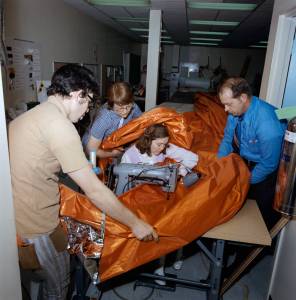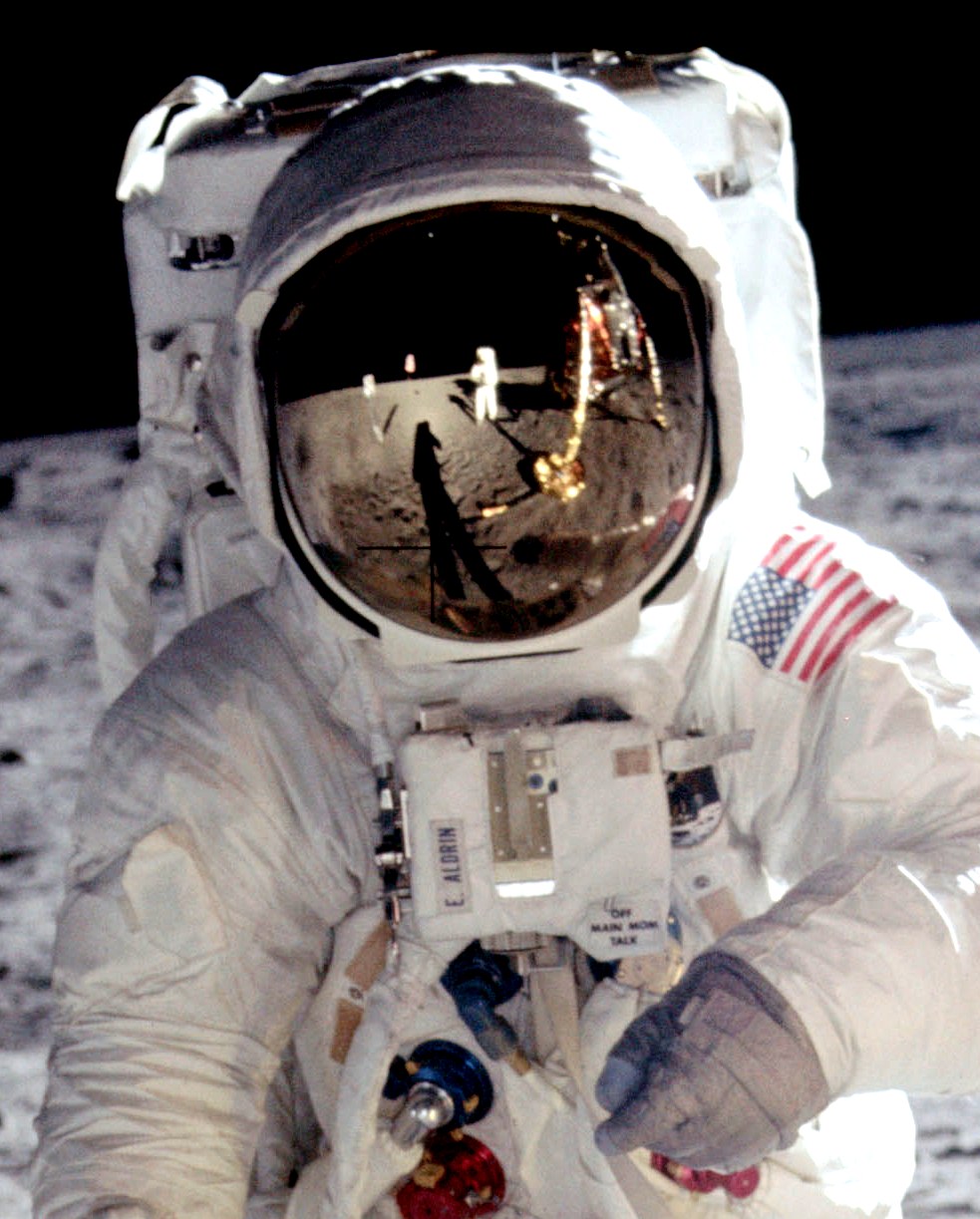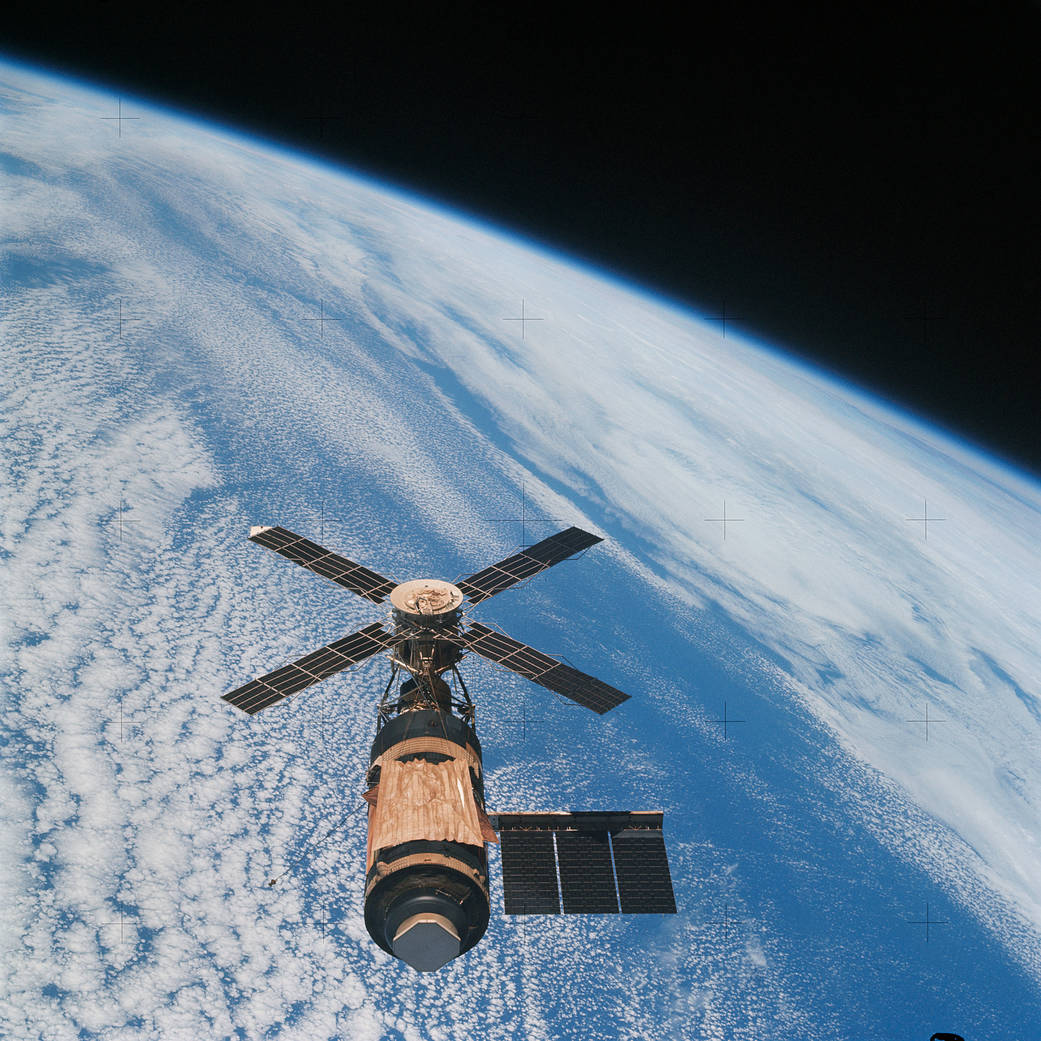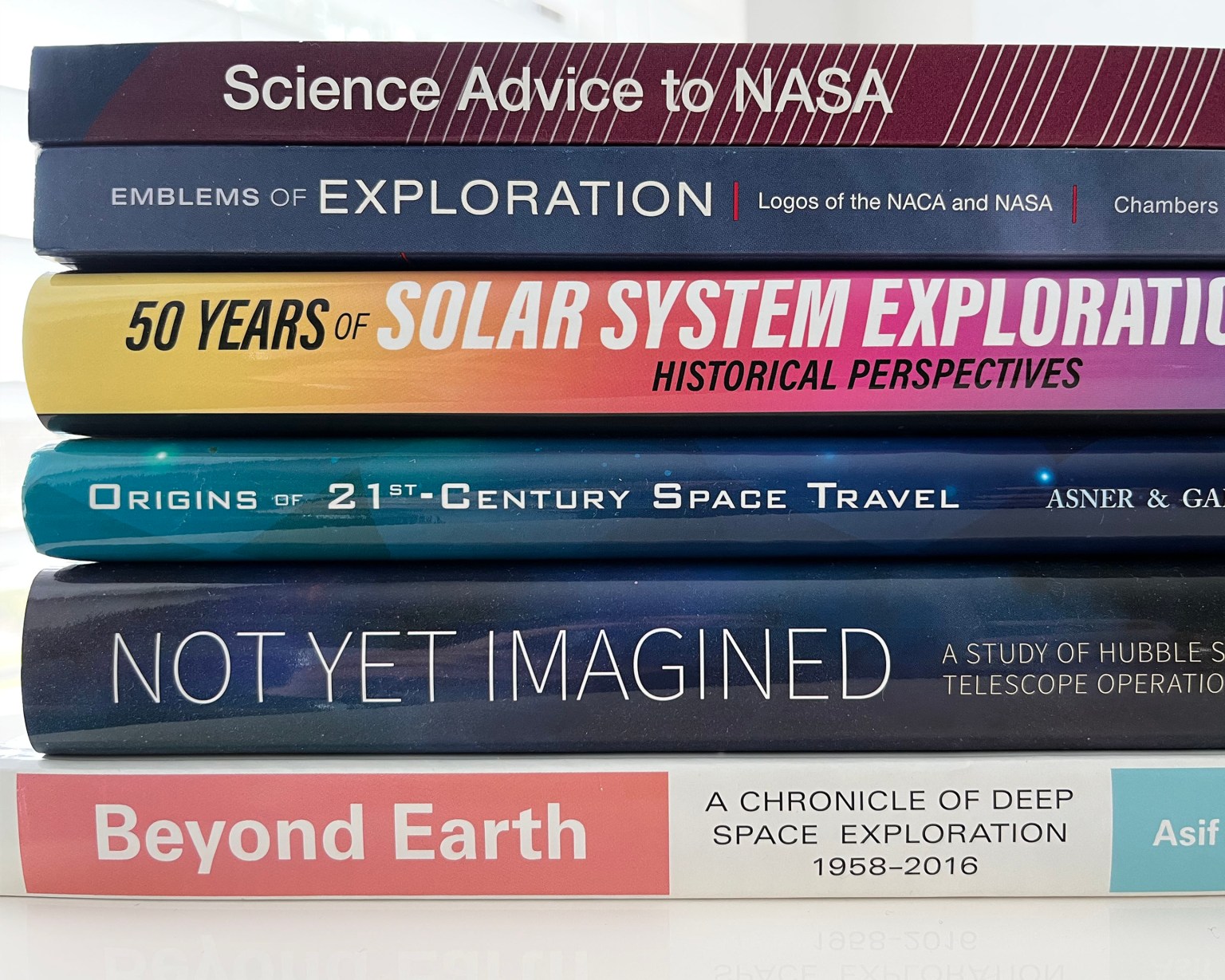Skylab, America’s first space station and the first crewed research laboratory in space, lifted off on May 14, 1973, on the last Saturn V rocket. Although the Soviet Union orbited the first experimental space station called Salyut in 1971, the larger and more complex Skylab enabled research in several areas.
Skylab, America’s first space station and the first crewed research laboratory in space, lifted off on May 14, 1973, on the last Saturn V rocket. Although the Soviet Union orbited the first experimental space station called Salyut in 1971, the larger and more complex Skylab enabled research in several areas. These included life sciences, in particular the astronauts’ physiological responses to long-duration space flight, Earth sciences, and solar physics and astronomy, with additional experiments in materials processing. Skylab also gave students the opportunity to fly experiments in space. Three crews of three astronauts planned to spend 28, 56, and 56 days aboard the orbiting laboratory conducting 270 experiments.
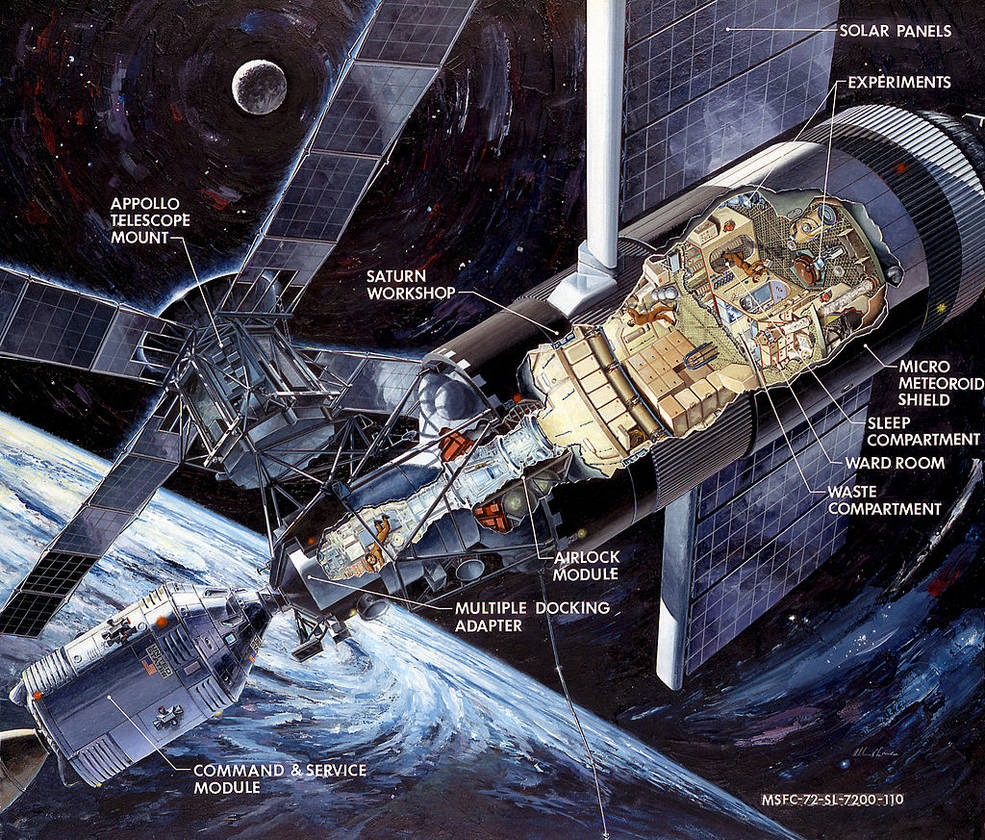
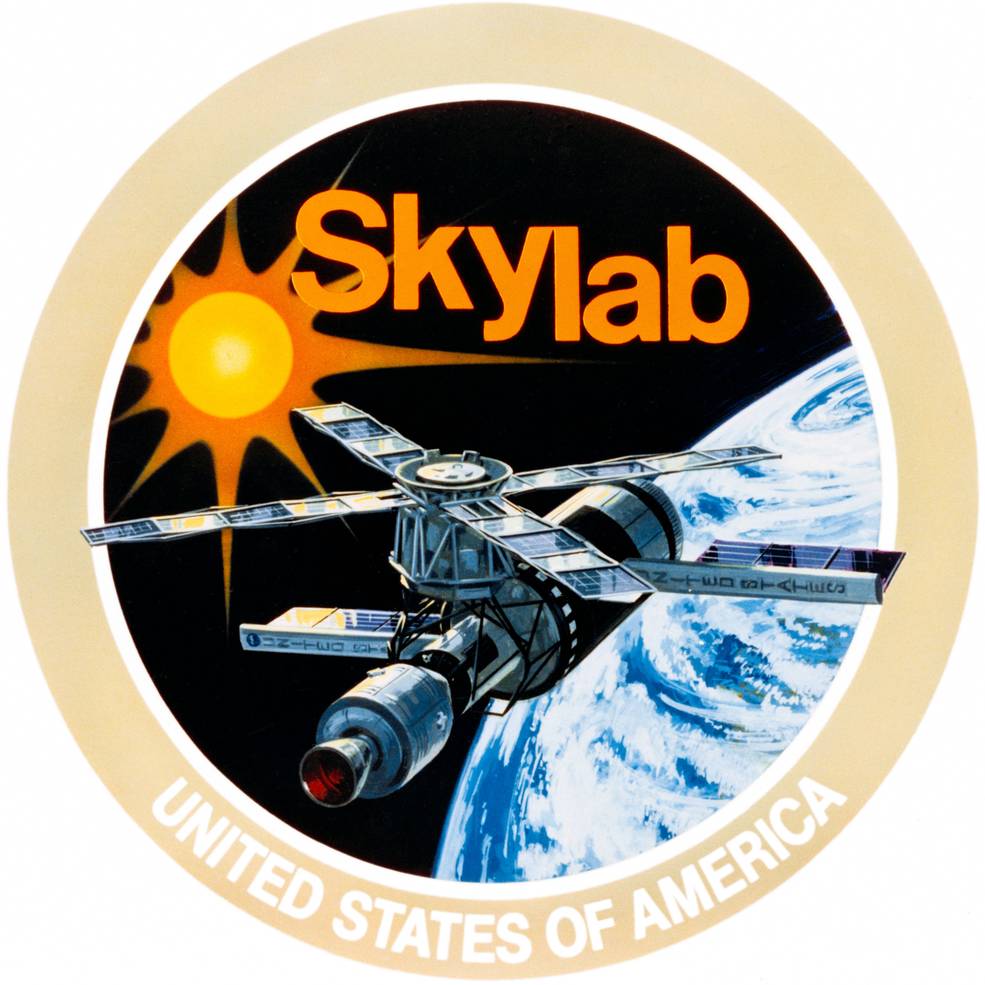
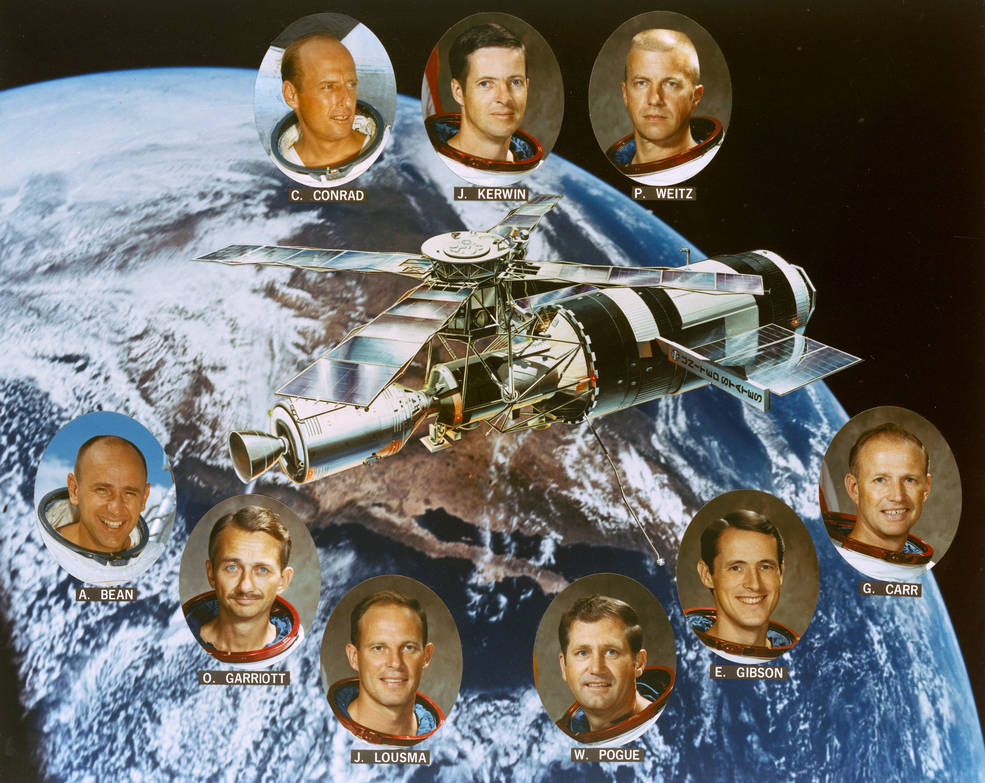
Left: Illustration of the Skylab space station and its components as it would have appeared without the damage incurred at launch. Middle: Skylab Program patch. Right: Composite of the three three-person crews who completed long-duration missions aboard the space station.
The Skylab complex consisted of four major components: the Orbital Workshop (OWS), the Airlock Module (AM), the Multiple Docking Adapter (MDA), and the Apollo Telescope Mount (ATM). The Apollo Command and Service Module transported crews to and from Skylab and remained attached to the station throughout a crew’s occupancy to serve as an emergency escape vehicle. The OWS served as the main working, living, and sleeping compartment for the crews, and contained exercise equipment, a galley, and many of the scientific experiments, for the life sciences studies. Two large solar arrays on the OWS provided 12.4 kW of power to the station. The AM enabled astronauts to conduct spacewalks, while the MDA included a prime and backup docking port for the Apollo spacecraft and also housed the Earth Resources Experiment Package. The ATM contained telescopes for solar observations and four solar arrays for additional power. Once in orbit, the complex weighed 170,000 pounds, by far the heaviest spacecraft at that time.
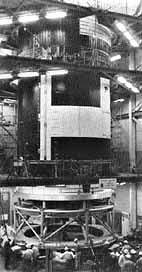
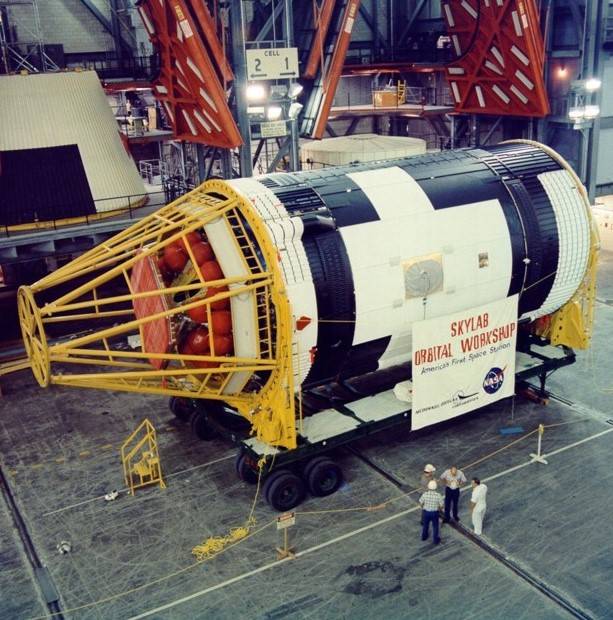
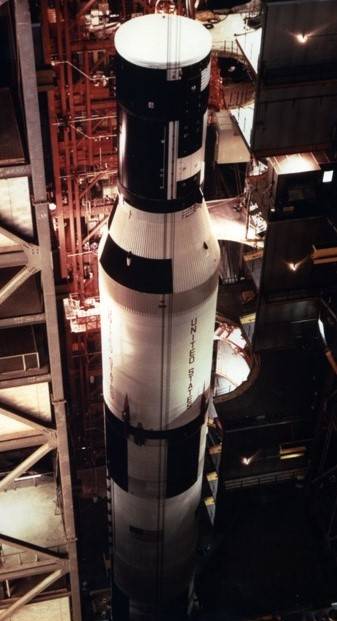
Left: Workers at the McDonnell Douglas plant in Huntington Beach, California, work on the Skylab 1 Orbital Workshop (OWS) in 1971. Middle: The completed Skylab OWS after arrival in the Vehicle Assembly Building (VAB) at NASA’s Kennedy Space Center in Florida in September 1972. Right: Workers in the VAB stack the Skylab OWS atop its Saturn V rocket.
Engineers at the McDonnell Douglas plant in Huntington Beach, California, converted the S-IVB stage of Saturn IB-212 into the Skylab OWS, delivering it to NASA’s Kennedy Space Center (KSC) in Florida on Sept. 23, 1972. They also converted the S-IVB from Saturn V-515 into a flight backup OWS. Workers in KSC’s Vehicle Assembly Building stacked the OWS and the other Skylab components onto their Saturn V rocket and rolled the vehicle to Launch Pad 39A on April 16, 1973. Following completion of a countdown test on May 3, the actual countdown for launch began on May 9. Engineers conducted a parallel countdown for the first crew expected to liftoff from Launch Pad 39B 24 hours after the launch of lab.
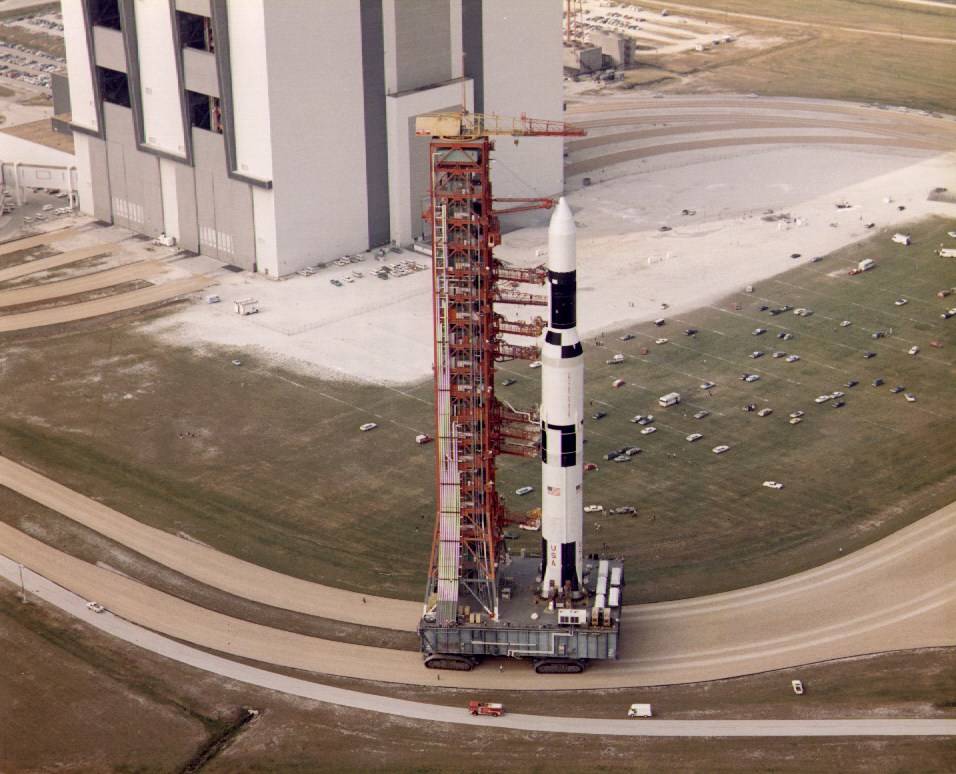
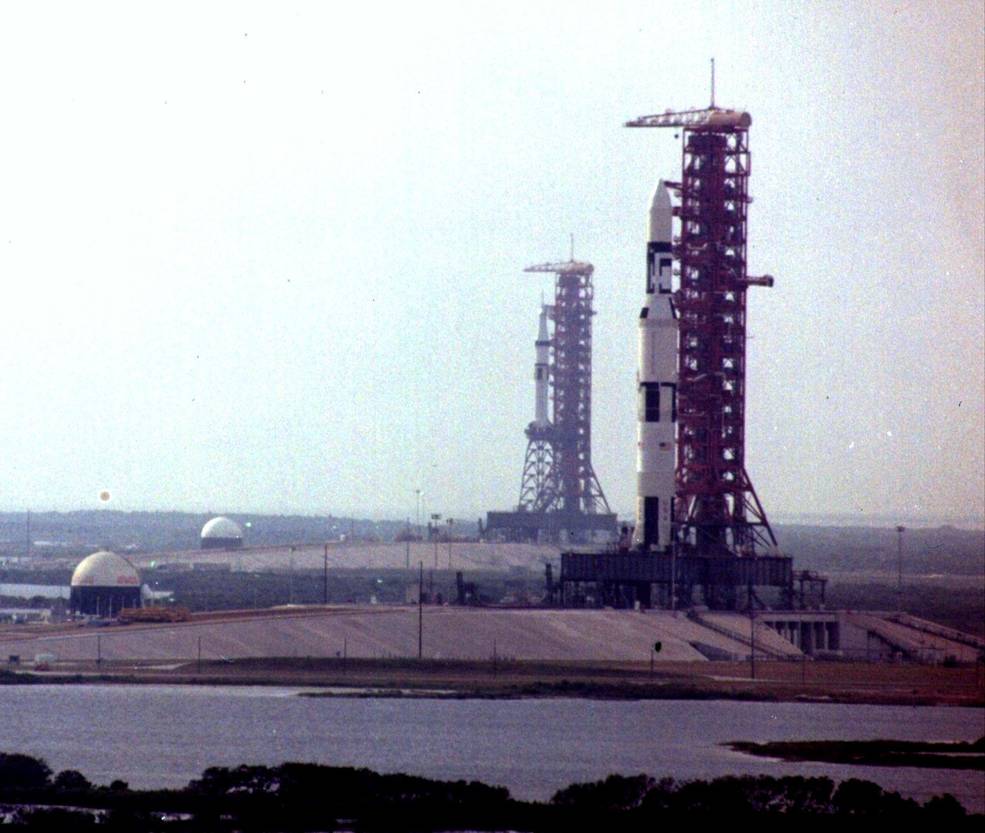
Left: Rollout of Skylab 1 atop its Saturn V rocket on April 16, 1973. Right: Two Saturn rockets on their respective pads – Skylab 1 atop its Saturn V on Pad 39A in the foreground and Skylab 2 atop its Saturn IB on Pad 39B in the background.
On May 14, 1973, the final Saturn V rocket thundered off Launch Pad 39A at NASA’s Kennedy Space Center in Florida to lift the Skylab space station into orbit. At first, all appeared to be proceeding normally, but at about 63 seconds into the mission, flight controllers in Houston observed the first signs of trouble. Telemetry indicated premature deployment of the micrometeoroid shield, designed to protect the station from debris and also act as a thermal blanket, and at least one of the OWS solar arrays, events that should have taken place only once the station achieved orbit. Less than 10 minutes after launch, after reaching its planned orbit, Skylab separated from the Saturn V’s S-II second stage and began a preprogrammed sequence to deploy the solar arrays and the ATM. Engineers in the Mission Control Center at NASA’s Johnson Space Center, led by Flight Director Donald R. Puddy, noted that while the ATM and its arrays deployed normally, sensors indicated that the main OWS arrays did not and were only generating 25 watts of power. Furthermore, temperatures inside the station began steadily rising to levels that would be intolerable for the crew, harmful to delicate equipment, and ruin onboard consumables, indicating the loss of thermal protection from the missing micrometeoroid shield. With the station underpowered and overheating, the entire Skylab program seemed in jeopardy. Flight controllers faced a daunting challenge. To maximize power generation by the ATM solar arrays, the best attitude was to orient them toward the Sun, but this caused maximal heating on the orbital workshop. Conversely, the optimal attitude to minimize the heat loads on the OWS significantly reduced power generation. After a day or so, controllers arrived at a compromise attitude to balance these competing factors while engineers and astronauts worked tirelessly to find more permanent solutions.
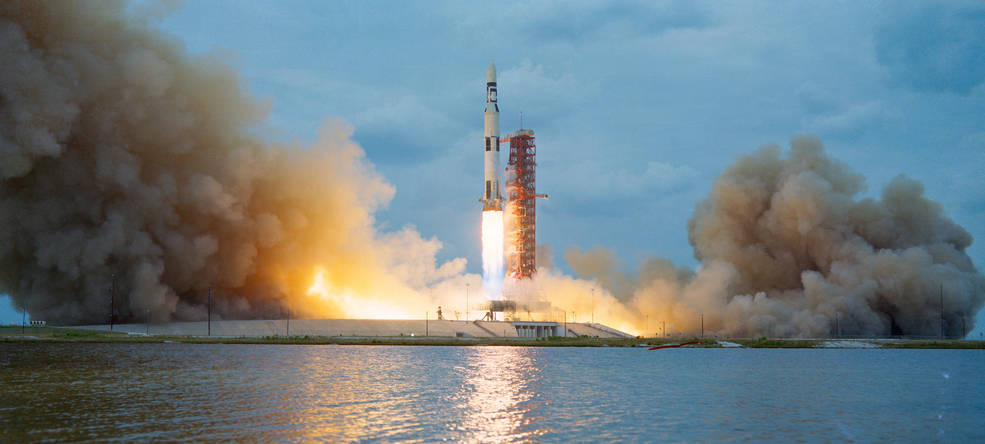
Launch of the Skylab 1 space station on May 14, 1973, the final flight of a Saturn V rocket.
Review of the telemetry revealed that two major and interrelated anomalies occurred during powered flight, at 63 seconds and 593 seconds into the mission, as well as one close call. The first anomaly occurred two seconds after the vehicle passed the sound barrier, when aerodynamic forces tore the micrometeoroid shield from around the OWS and loosened both of the large solar arrays, with debris wrapping around one of them, preventing its eventual deployment. Because the vehicle had entered into a cloud deck during ascent, ground observers could not observe the event. As the shield fell from Skylab, its debris damaged pyrotechnic devices designed to separate the interstage ring between the first and second stages. A few seconds following burnout and jettison of the first stage, the interstage structure normally jettisons also, but in this case it remained in place. The S-II second stage engines ignited into the partially enclosed space, raising temperatures around the engines to near catastrophic levels. The engines finally shut down as planned, seconds from averting a launch abort. When Skylab separated from the second stage at 593 seconds, retrorockets designed to back the stage away from the lab impinged on one of the partially opened solar panels and tore it from the vehicle.
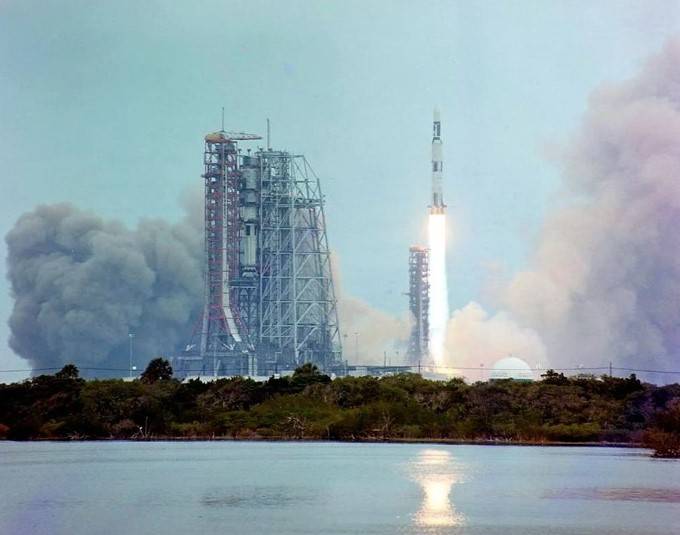
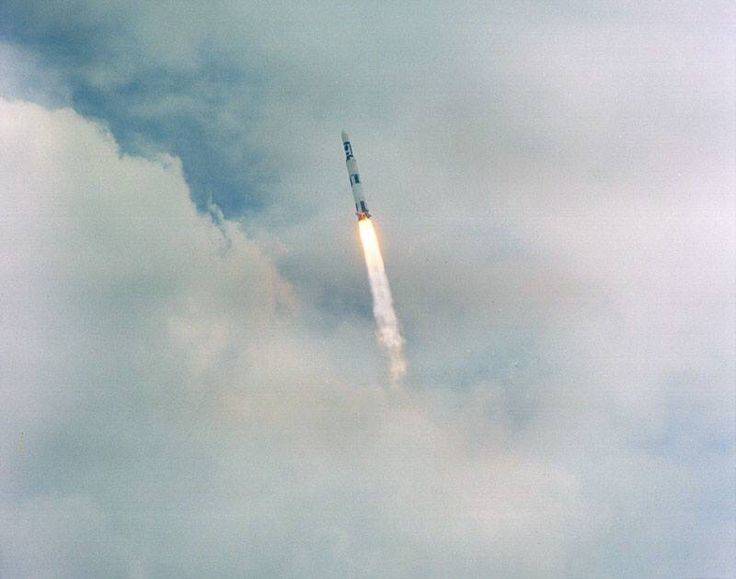
Left: Liftoff of the Skylab 1 space station from Launch Pad 39A, with the Saturn IB for the Skylab 2 crew in the foreground on Launch Pad 39B. Right: The Saturn V carrying the Skylab 1 space station seconds before it disappeared from view in the cloud cover, when the micrometeoroid shield tore off the vehicle.
Managers delayed the launch of the first crew, planned to take place 24 hours after Skylab reached orbit, first by five days and, as troubleshooting continued, another five days until May 25. The crew, Commander Charles “Pete” Conrad, Pilot Paul J. Weitz, and Science Pilot Joseph P. Kerwin, flew back to Houston to begin training for a seemingly impossible mission to rescue Skylab. Engineers, managers and astronauts at NASA’s Marshall Space Flight Center in Huntsville, Alabama, and Johnson Space Center in Houston began working around the clock to find a solution to lower the station’s internal temperature and to deploy the solar arrays to allow the Skylab program to continue.
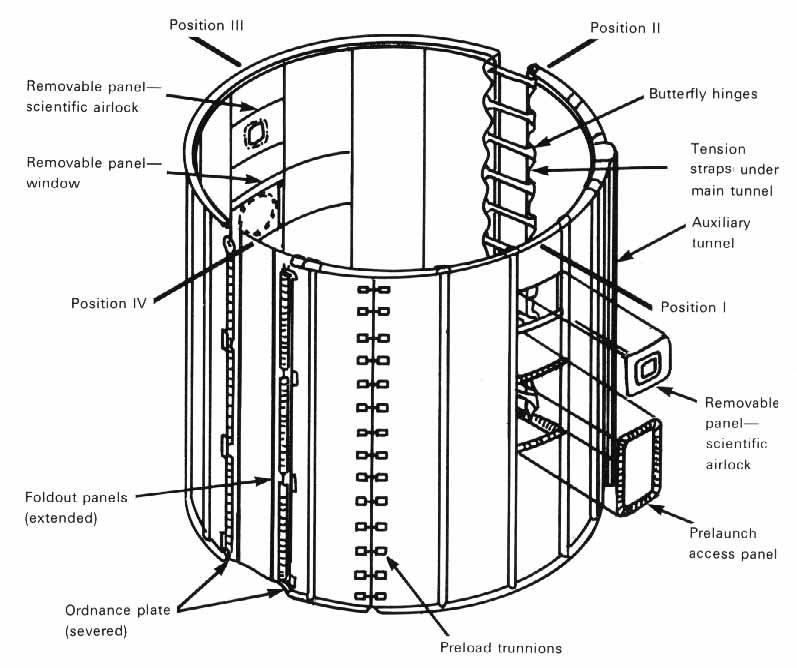
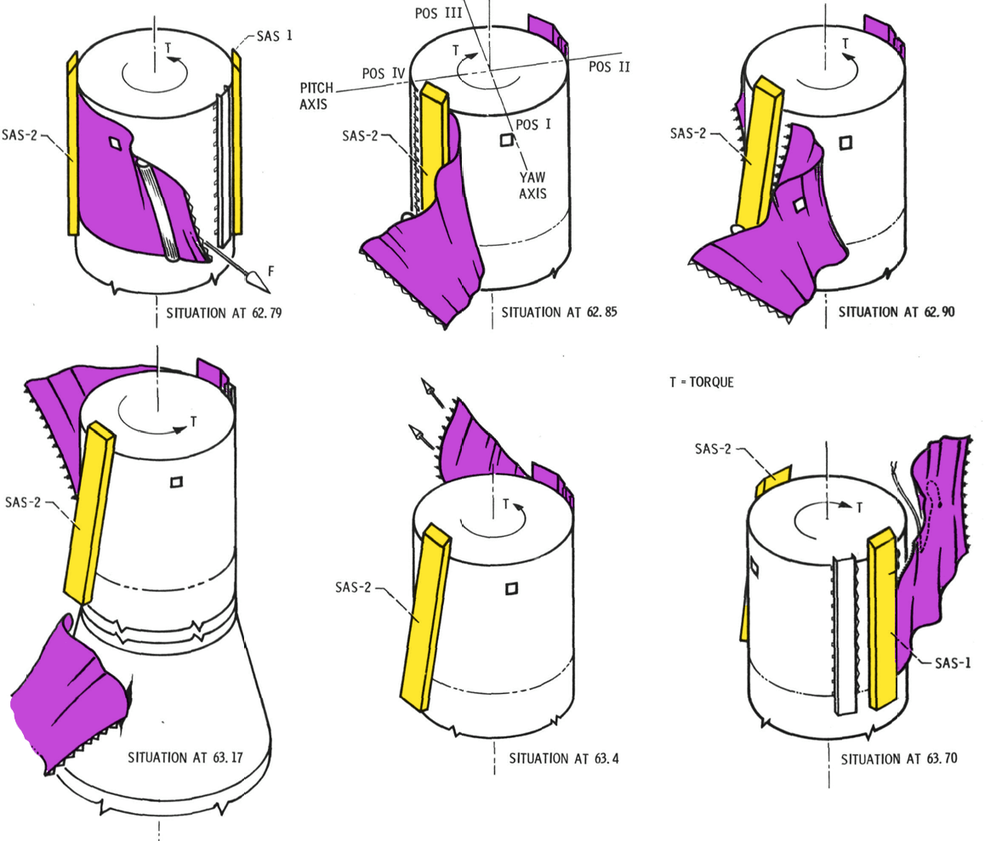
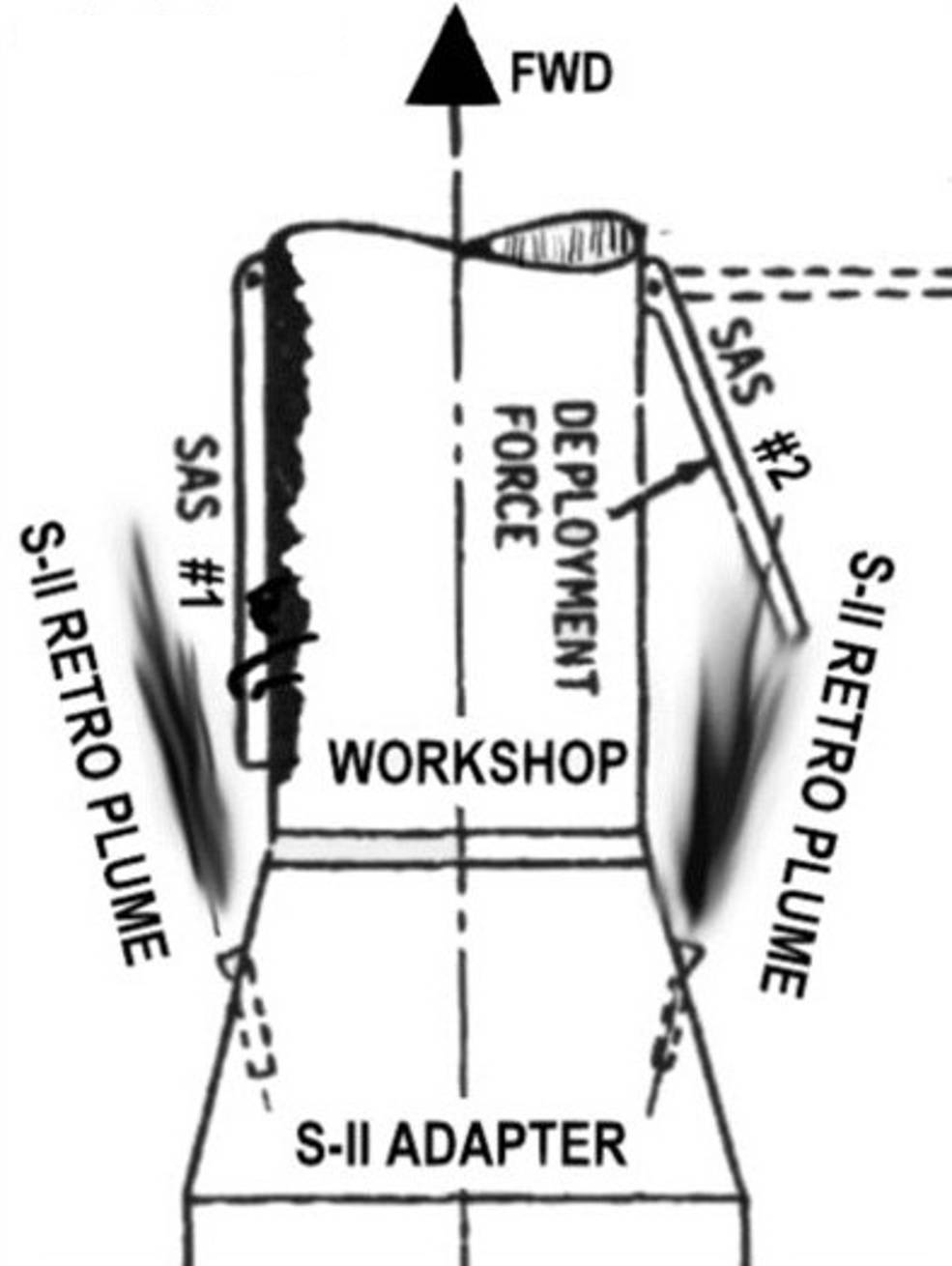
Left: Schematic illustration of the Skylab micrometeoroid shield. Middle: Illustration of the most likely scenario of the loss of Skylab’s micrometeoroid shield and its impact on the solar arrays. Credit: Image courtesy Johannes Kempannen. Right: Illustration of the retrorocket plume causing the loss of one of Skylab’s solar arrays.
NASA Administrator James C. Fletcher formed an investigation board to determine the cause of the failure of the micrometeoroid shield. The board concluded that the shield’s inability to withstand the supersonic air currents during launch contributed to the failure. Also, prelaunch testing focused on deployment of the shield in orbit, not surviving the aerodynamically stressful launch environment. Developers of the shield, the board concluded, did not spend enough time talking with aerodynamicists about the shield’s launch environment and its potential impacts on the hardware. Finally, managers treated the shield as a subsystem of the launch vehicle and therefore did not assign a dedicated project engineer to the shield to consider design and load concerns.
As a side note, the Saturn V’s S-II second stage also entered orbit, as planned, becoming the largest although not the heaviest single object placed into orbit– Skylab 1 itself holds that distinction at 170,000 pounds. The stage weighed an estimated 79,700 pounds after venting its residual propellant and made an uncontrolled, and mainly unpublicized, reentry over the Indian Ocean on Jan. 11, 1975. Skylab 1, years after the departure of the final crew, made a highly publicized reentry over the Indian Ocean and Australia on July 11, 1979.
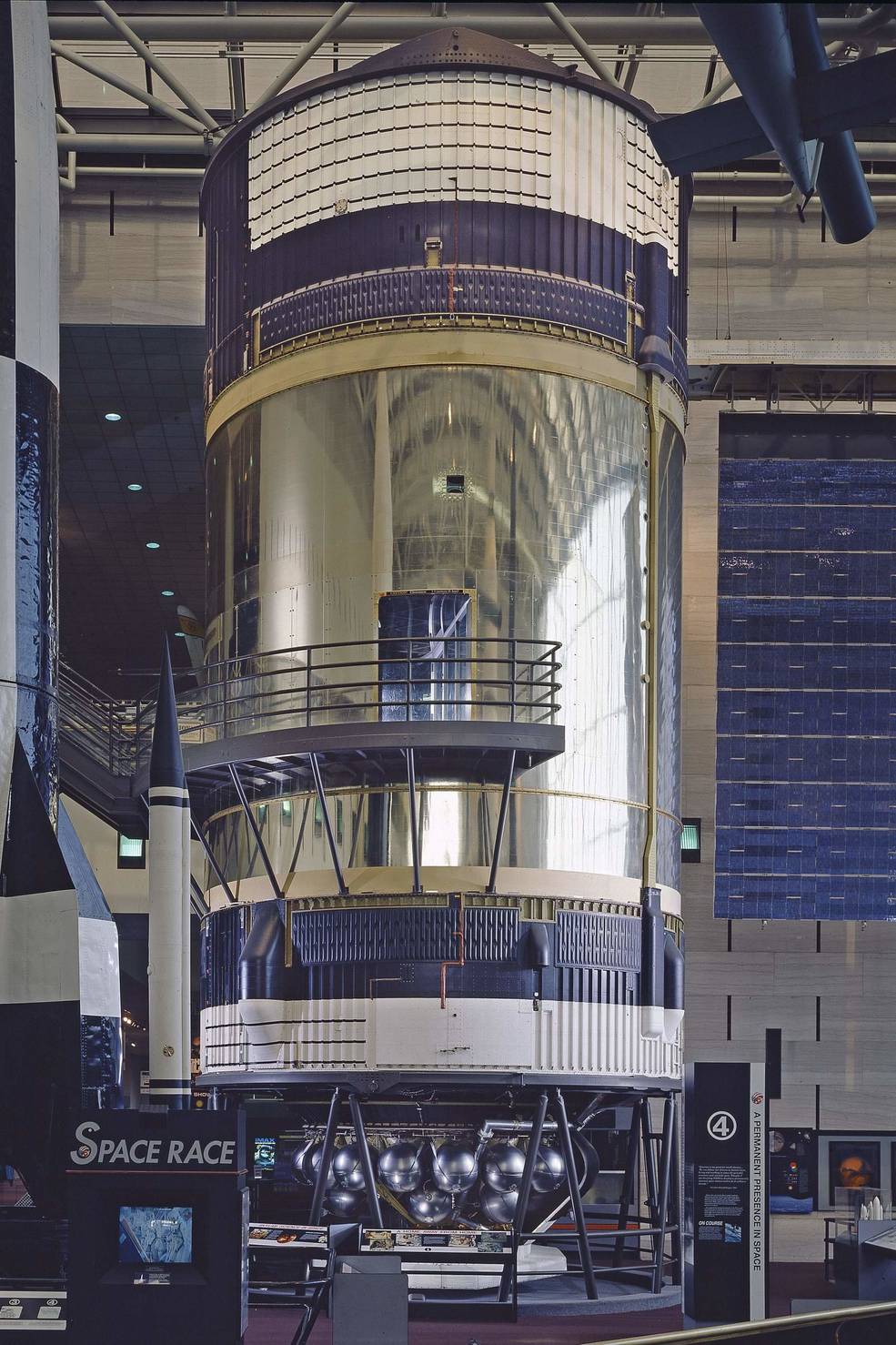
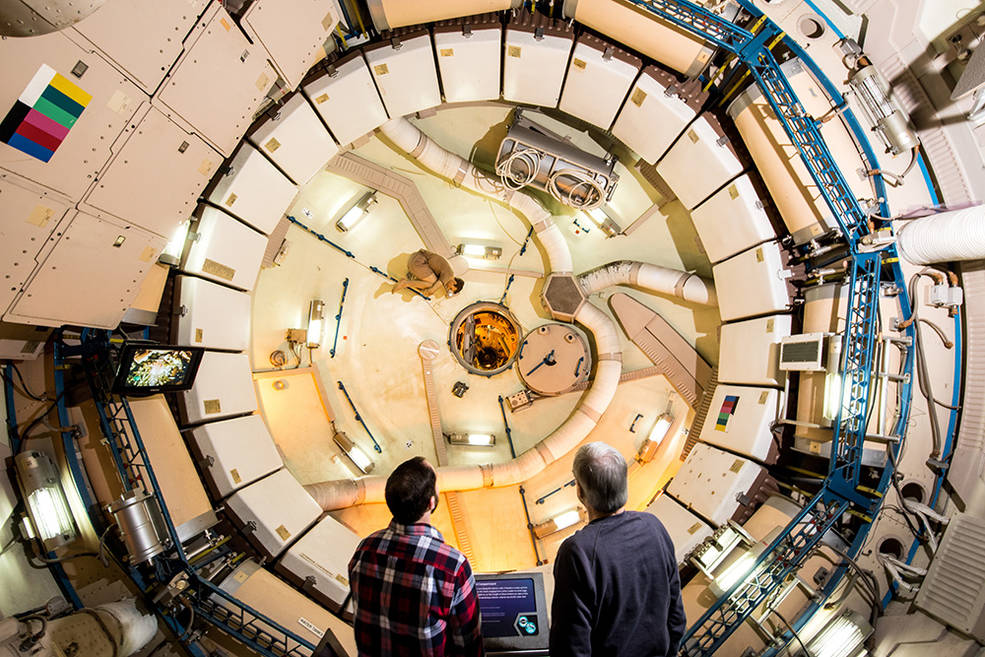
Left: The backup Skylab workshop on display at the Smithsonian Institution’s National Air and Space Museum (NASM) in Washington, D.C. Credit: Image courtesy of NASM. Right: View inside the Skylab trainer on display at Space Center Houston (SCH). Credit: Image courtesy of SCH.
The backup Skylab OWS on display at the Smithsonian Institution’s National Air and Space Museum in Washington, D.C., and the Skylab training module on display at Space Center Houston.


























